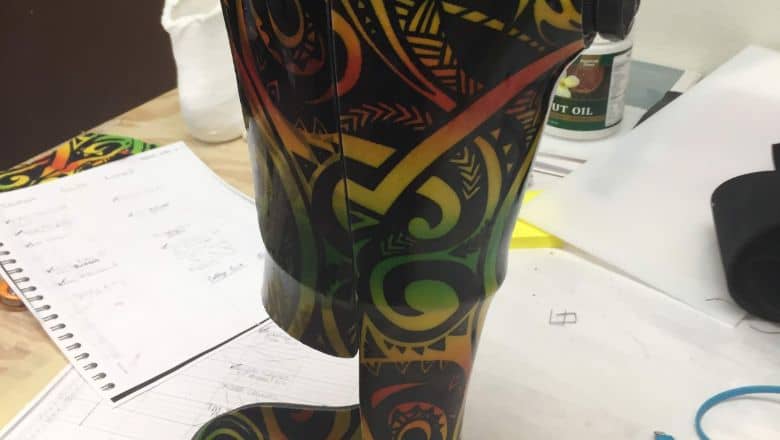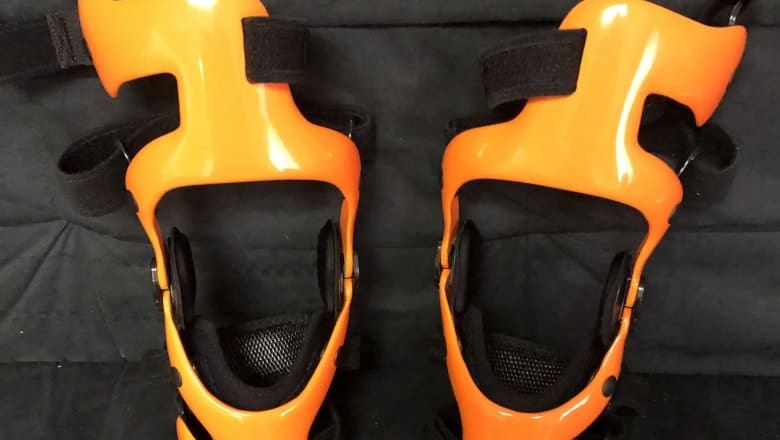Have you ever struggled to lift your foot while walking? Or perhaps you have a loved one who tends to trip over their own two feet. Difficulty walking isn’t necessarily the result of clumsiness — drop foot is a common condition caused by a specific type of nerve injury. Let’s take a deeper dive and explore whether custom orthotics from Evolve Prosthetics & Orthotics can help.
What Is Drop Foot?
Drop foot is a neurological condition where a person has trouble lifting the front part of the foot off the ground, causing it to drag while walking. It’s caused by damage to the peroneal nerve, a sciatic nerve branch. The peroneal nerve controls the muscles that lift the foot. Here are some of the most common causes.
- Brain Injury / Stroke
- Knee Surgery
- Muscle Disorders
- Diabetes & Alcohol Use
- Certain Autoimmune Conditions
- Fractured Fibula
- Regular Wearing Of High-Heel Boots
- Prolonged Nerve Compression Or Constriction
- Herniated Disc
Drop Foot Symptoms
A foot slapping on the ground is one of the most common signs of the condition. Other symptoms include a high stepping gait, tingling or numbness, and weakness in the affected foot.
How To Fix Drop Foot
Many people are embarrassed by the condition. It can be hazardous for seniors and people with osteoporosis, as falls are a risk for broken bones. Some treatment options that help manage the condition and reduce your risk of falling include the ones listed below.
- Orthotics
- Electrical Stimulation Therapy
- Surgery
- Exercise
Orthotics To Regain Mobility
Drop foot orthotics are one of the most popular treatment options. A brace, or AFO (ankle-foot orthosis), can help lift and protect the foot from injury. AFOs reduce your risk of falling by keeping your foot in a stable, flexed position. Many braces are available, so it’s best to consult a healthcare professional to determine which is right for you.
Exercises For Drop Foot
Some exercises that help maintain the affected foot’s mobility include toe raises, ankle rotations, and heel drops. However, you should not begin any exercise regime without consulting your doctor and a physical therapist who will teach you the proper exercises to help prevent further injury.
Retrain Muscles With Electric Stimulation Therapy
This innovative treatment helps retrain your affected muscles and reduce atrophy. It can slow the progression of muscle weakness while it trains your muscles to contract and produce movement while walking. Again, this needs to be done under the care of your medical and therapy team.
Heal The Nerve With Surgery
Peroneal nerve surgery involves repairing or replacing the nerve and implanting a device that stimulates functionality. It is sometimes necessary in extreme cases where other treatment options have failed.
More Tips For Fall Prevention
When living with drop foot, you need to be extra careful so you don’t fall and hurt yourself. In addition to seeking formal treatment, here are some other things you can do to remain steady while walking.
- Wear properly fitted shoes with good traction soles.
- Use walking aids such as a cane or walker to help balance.
- Inspect your feet daily for injury or infection and seek immediate treatment if you find anything.
- Avoid uneven surfaces, and use handrails when climbing stairs.
- Take time; don’t rush, and watch the ground for obstacles.
- Keep your home and walkways well-lit and free of obstructions.
Step Out With Confidence
If you live in Las Vegas or Henderson and are struggling with drop foot, Evolve Prosthetics & Orthotics can help. We can fit you with a custom AFO brace to help you walk better and avoid further nerve damage. For more information and to schedule your free consultation, give us a call today.




